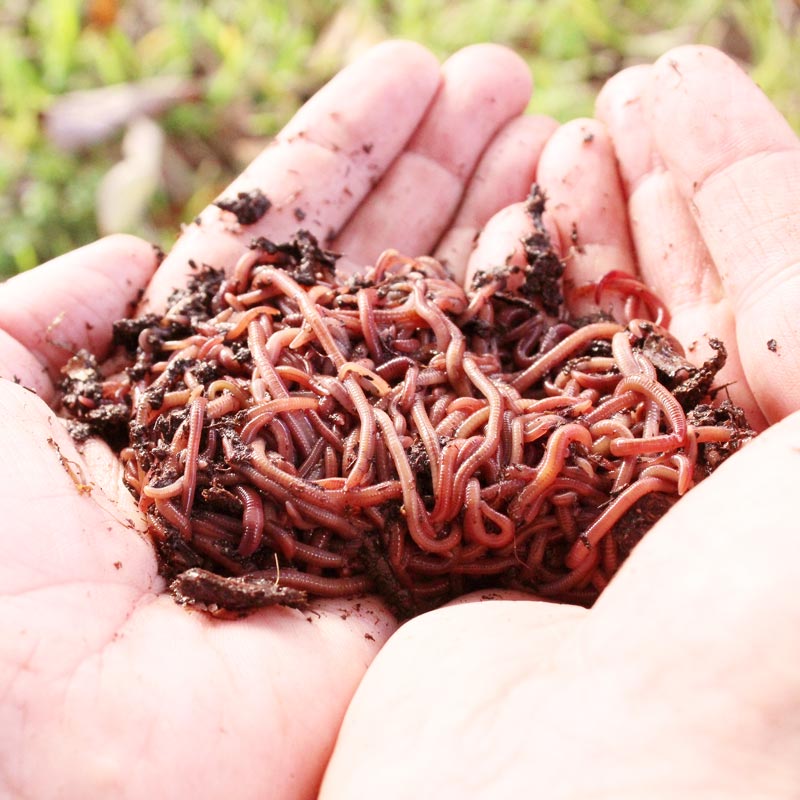Trust Red Wiggler Express for Reliable and Effective Lawn Care Options
Trust Red Wiggler Express for Reliable and Effective Lawn Care Options
Blog Article
Red Wigglers: The Unsung Heroes of Organic Waste Recycling
Red wigglers, or Eisenia fetida, offer as essential representatives in the organic waste recycling procedure, changing thrown out materials into important vermicompost. As the world increasingly looks for options to fight waste build-up and enhance agricultural performance, comprehending the role of these worms comes to be crucial.
What Are Red Wigglers?
The exceptional durability of red wigglers, medically called Eisenia fetida, emphasizes their vital function in natural waste recycling. These little, reddish-brown earthworms are commonly discovered in decaying raw material, such as compost heaps and manure loads. Lake Hickory Bait. Unlike other earthworm varieties, red wigglers flourish in nutrient-rich atmospheres and are very reliable at breaking down natural products, making them important for vermicomposting

(Red Wiggler Express)Along with their duty in waste reduction, red wigglers contribute to dirt wellness by enhancing soil framework and oygenation through their burrowing activities (Lake Hickory Bait). Their presence in composting systems not just boosts disintegration prices but additionally advertises a sustainable technique to squander management, illustrating their importance in environmental conservation efforts
Benefits of Composting With Worms
Composting with worms, particularly red wigglers, offers numerous benefits that enhance both waste management and soil health and wellness. These worms effectively break down organic waste, transforming it into nutrient-rich vermicompost that enriches dirt. This process increases decay, enabling a much faster recycling of cooking area scraps and various other natural materials contrasted to conventional composting techniques.
Furthermore, the vermicompost produced by red wigglers is including valuable bacteria, which assist improve soil structure, oygenation, and moisture retention. This improves the general health of plants, advertising energetic development and enhanced returns in gardens and farming setups. The usage of worms in composting decreases the manufacturing of greenhouse gases, such as methane, adding to an extra sustainable waste monitoring system.

Exactly How to Start Vermicomposting
Developing a vermicomposting system is an uncomplicated process that can generate substantial benefits for both waste management and dirt enrichment. To begin, pick an appropriate container, such as a plastic bin or wooden box, with sufficient ventilation openings to make sure appropriate air flow. The dimensions must preferably be around 2 feet by 3 feet, permitting ample space for the worms to thrive.
Next, prepare bed linen product, which can be composed of shredded paper, cardboard, or coconut coir. This bedding should be moistened to produce a suitable environment for the worms. As soon as the bed linens remains in area, present red wigglers (Eisenia fetida) right into the container, generally around one pound of worms for each square foot of surface area.
Following the placement of worms, include organic waste, such as vegetables and fruit scraps, coffee grounds, and crushed eggshells. Avoid adding dairy products, meat, or oils, as these can produce smells and attract insects. Lastly, position the bin in a shaded, temperature-controlled location to keep optimum problems for worm activity. With these steps, you will successfully initiate a vermicomposting system that adds to lasting waste administration and enriches your soil.
Preserving a Healthy Worm Bin
(Red Wiggler Express)Keeping a worm container thriving requires normal attention and treatment to guarantee the health of the red wigglers and the efficiency of the composting procedure. Appropriate upkeep begins with monitoring the moisture levels; the container must perspire however not waterlogged. A good general rule is to preserve an uniformity similar to a wrung-out sponge.
Oygenation is crucial. Carefully blending the bedding and food scraps every few weeks avoids compaction and makes certain that all worms have accessibility to oxygen. Additionally, it is vital to feed the worms appropriately. A balanced diet regimen of fruit and vegetable scraps, coffee grounds, and smashed eggshells should be right here offered in small amounts to stay clear of overfeeding, which can result in odors and parasites.
If the container ends up being as well hot or cold, the worms may end up being stressed out. By vigilantly managing these factors, one can maintain a durable and productive worm container.
Effect On Lasting Living
The successful maintenance of a worm container not just profits the health and wellness of red wigglers however also contributes dramatically to lasting living methods. By recycling natural waste, such as kitchen area scraps and lawn debris, red wigglers help draw away considerable amounts of product from garbage dumps. This reduction in waste not only lowers greenhouse gas discharges yet likewise decreases the environmental worry connected with waste administration.
Additionally, the castings generated by red wigglers function as a nutrient-rich organic plant food, boosting soil health and advertising plant growth. This all-natural choice to chemical fertilizers sustains lasting farming and gardening techniques, minimizing dependence on synthetic inputs that can damage ecological communities. Furthermore, worm composting cultivates recognition of waste administration, encouraging people and communities to embrace more sustainable practices.

Final Thought
In recap, red wigglers function as important contributors to natural waste reusing via their efficient decomposition of organic materials. Their capability to create nutrient-rich vermicompost improves dirt health and wellness and supports sustainable agricultural techniques. By integrating vermicomposting into waste monitoring techniques, individuals and areas can significantly lower waste while promoting ecological sustainability. The role of Eisenia fetida in promoting healthy and balanced ecological communities emphasizes the importance of these microorganisms in achieving sustainable living and improving dirt fertility.
Report this page